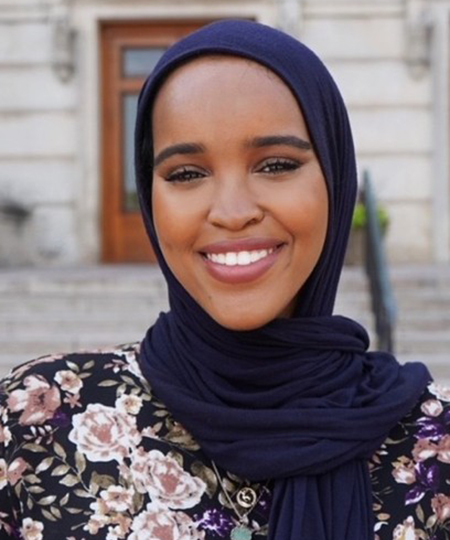Ohio voters have spoken loud and clear in the recent special election. They have rejected well-financed efforts to make it harder to rewrite the state’s constitution. At stake was a likely vote in November on a constitutional amendment to enshrine reproductive choice in state law. Voters came out in huge numbers to defend their right to choose.
It has been hectic in Ohio since Issue 1 went onto the ballot. As the youngest person to serve in the Ohio state house — I was elected at 26 — I felt responsible for reaching young people and making them aware of the importance of voting. I have met people who have never voted before. And I have felt them grasp the importance of their democratic involvement. There has been an infectious sense of possibility and optimism.
The face of Ohio’s elected officials is changing, too. I’m a Somali-American Muslim woman, and I wear a headscarf. I was born in a Kenyan refugee camp. The city of Columbus has 60,000 Somali-American residents, but a Somali-American has never served on its city council.
When I ran, I lost count of people who said to me I was too young and that I should wait. But I met other young women who told me that’s common for young women who run for office. And I won my race. I want to be part of the change in politics in the state and across the country, and this election is an indicator of things to come.
People who have felt invisible in the past can decide for themselves what should happen in their communities. This is a victory for democracy. It might take 118 terms for Congress to reach gender parity at its current rate of progress, but we’re moving in the right direction.
As I’ve researched this issue, I have met with young people who never felt that electoral politics were important. Yet, on this issue, they think that Issue 1’s backers have overreached, and they want to push back. They have come out in huge numbers.
The vote in Ohio follows the loss of bodily autonomy following the Supreme Court’s overturning of Roe v. Wade, which set reproductive rights back by nearly 50 years in the United States. At the time, people predicted, correctly, that the decision would politically enrage a generation of young women.
Immediately after that, Ohio lawmakers banned abortions at six weeks. Then, Kansas voters upheld reproductive choice. Then, in April, Wisconsin voters swept a judge to office who promised to uphold a woman’s right to choose. These are victories for progressive policies on reproductive rights, even in states that tend to skew red or at least purple.
Results suggest that voter engagement on these issues could also shape the 2024 presidential election in battleground states.
In Ohio, November’s proposed constitutional amendment would protect the right of individuals to make their own reproductive decisions, including on contraception and abortion. Measure 1 sought to raise the threshold for such amendments to 60 percent from 50 percent. But voters roundly rejected it.
Nearly 700,000 Ohioans voted early, in-person or by mail, more than the early votes cast in the May 2022 primary election. I’ve seen lines for the polls snaking around the block. There has been much tension. We have seen the statehouse packed with protesters. More than 200 groups have come out against the amendments, many of whom have never worked together. It has been a time for forming new working relationships.
I am proud of what we have accomplished.
Last year, the same people backing the special election said August elections should be illegal because the state makes decisions based on low turnouts. They only reversed course in May when it became clear that a vote on an abortion rights amendment was likely in November. Voters don’t like that kind of about-face, and they made their voices heard at the ballot box.
The unexpectedly high voter turnout for an August election demonstrates the level of engagement and passion surrounding this issue. It signifies that the debate on reproductive choice is far from over and that the pushback against restrictive legislation is gaining momentum. It is now more critical than ever for advocates to continue actively working toward ensuring that every person has the right to make their own choices about their reproductive health.


